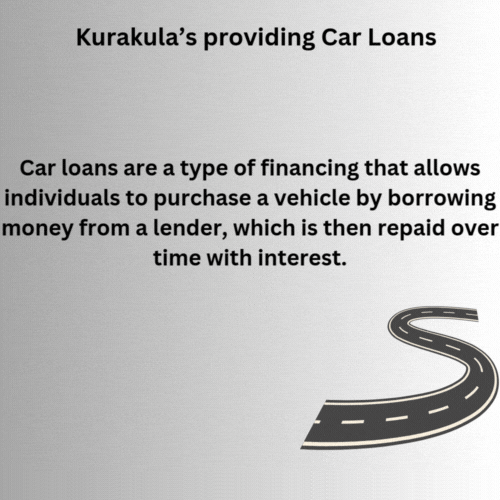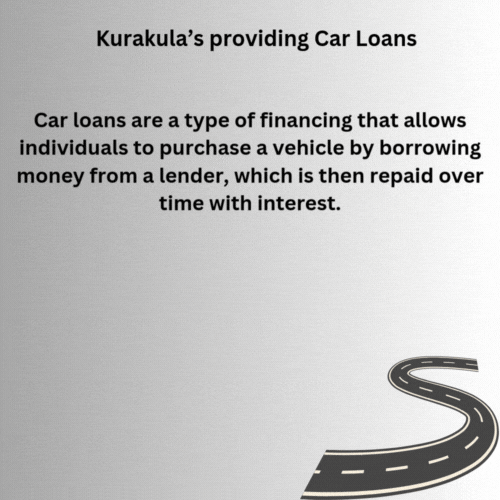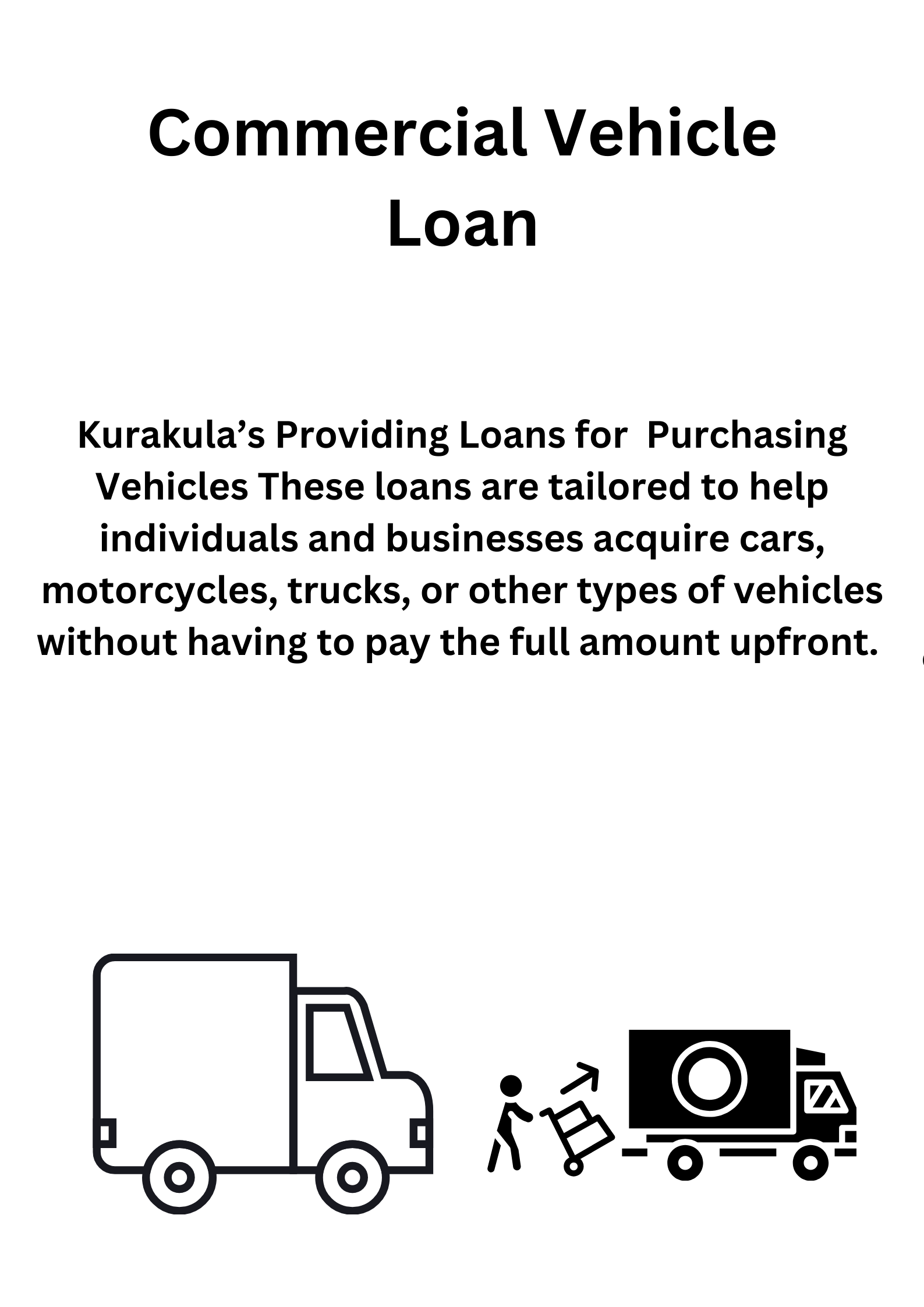Kurakula’s Business solutions pvt ltd.


How Car Loans Work Kurakula’s Business Solutions:
Loan Amount: The amount you borrow is typically based on the price of the car, minus any down payment or trade-in value.
Interest Rate: The lender charges interest on the loan, which can be fixed (stays the same) or variable (changes over time).
Loan Term: The repayment period, usually ranging from 24 to 84 months. Shorter terms mean higher monthly payments but lower total interest, while longer terms reduce monthly payments but increase total interest.
Monthly Payments: You repay the loan in monthly installments, which include both the principal (the amount borrowed) and interest.
Collateral: The car itself serves as collateral. If you fail to make payments, the lender can repossess the vehicle.
Types of Car Loans
Kurakula’s Business Solutions:
New Car Loans: For purchasing brand-new vehicles. These often have lower interest rates because new cars are considered less risky for lenders.
Used Car Loans: For purchasing pre-owned vehicles. Interest rates may be higher due to the higher risk associated with older cars.
Refinance Loans: Allows you to replace your current car loan with a new one, often to secure a lower interest rate or better terms.
Lease Buyout Loans: If you’ve leased a car and want to buy it at the end of the lease, you can take out a loan to finance the purchase.
Bad Credit Car Loans: For borrowers with poor credit scores. These loans typically come with higher interest rates.
Key Factors to Consider
Kurakula’s Business Solutions:
Credit Score: Your credit score plays a major role in determining your interest rate. Higher scores usually qualify for lower rates.
Down Payment: A larger down payment reduces the loan amount and can lower your monthly payments.
Interest Rate: Compare rates from multiple lenders to find the best deal.
Loan Term: Choose a term that balances affordable monthly payments with the total cost of the loan.
Total Cost: Consider the total amount you’ll pay over the life of the loan, including interest and fees.
Pre-Approval: Getting pre-approved for a loan can help you understand your budget and negotiate better with dealers.
Steps to Get a Car Loan
Kurakula’s Business Solutions:
Check Your Credit Score: Know your credit score and address any issues before applying.
Set a Budget: Determine how much you can afford to borrow and repay each month.
Shop Around: Compare loan offers from multiple lenders.
Get Pre-Approved: This gives you leverage when negotiating with dealers.
Read the Contract: Carefully review the loan agreement before signing.
Make Payments: Stay on top of your monthly payments to avoid penalties or repossession.
FAQ
What is the rule for car loans?
The next part of the 20/4/10 rule advises to finance the car for no more than four years (48 months)
What is the formula for a car loan?
So, to figure out how to calculate the interest rate on a car, follow these simple steps: Principal Amount x Interest Rate x Time (in years) = Total Interest
How car loan amount is calculated?
EMI Amount = [P x R x (1+R) ^N]/[(1+R) ^N-1], wherein P in principle, R is the rate of interest, and N is the number of instalments.
How much is a downpayment on a car?
As a general rule, you will have to pay a minimum of 10% of the car value as a down payment. Some lenders/banks offer car loans up to 90% of the on-road price. Some lenders offer car loans up to 100% of the ex-showroom price but you will have to pay the difference of on-road and ex-showroom price as a down-payment
Kurakula’s Business Solutions:-..



Post Comment